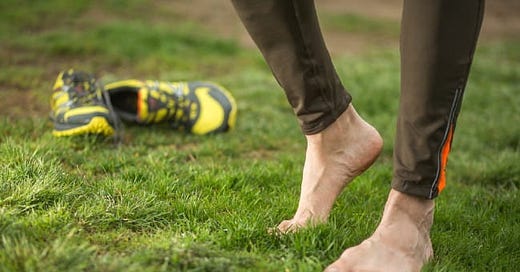Look back at the shoes worn 50 years ago. The shoe industry has done an amazing job developing footwear. As a result, we sacrifice the development of stability, mobility, and proprioception of the foot and ankle. To counter this, people have explored training barefoot. The shoe industry answered by introducing minimalist shoes. With all the options available, what’s the best approach? How do we ensure the development of our feet while maximizing our training?
Is there a benefit to barefoot training? YES!
Strengthens the foot and ankle
Improves mobility of the foot and ankle
Improves proprioception and balance
Is barefoot training appropriate for all activities? NO!
NEVER compromise safety
ALWAYS wear the BEST shoes to maximize the training effect
Cleats on grass, lifting shoes in the weight room, cross trainers on turf
Where does barefoot training fit in the plan?
Best implemented in warm-up activities or post-work cooldown activities
Simple, submaximal, and safe
Gradual transition from slow to fast
Wrap up
Barefoot training is beneficial when implemented appropriately. Training barefoot challenges stability and improves proprioception but compromises force application. It is not optimal for training speed, power and strength. It is a mistake to apply in these settings. By implementing barefoot training in warm-up and cooldown activities we can gain the benefits while not compromising optimal training in other areas.



